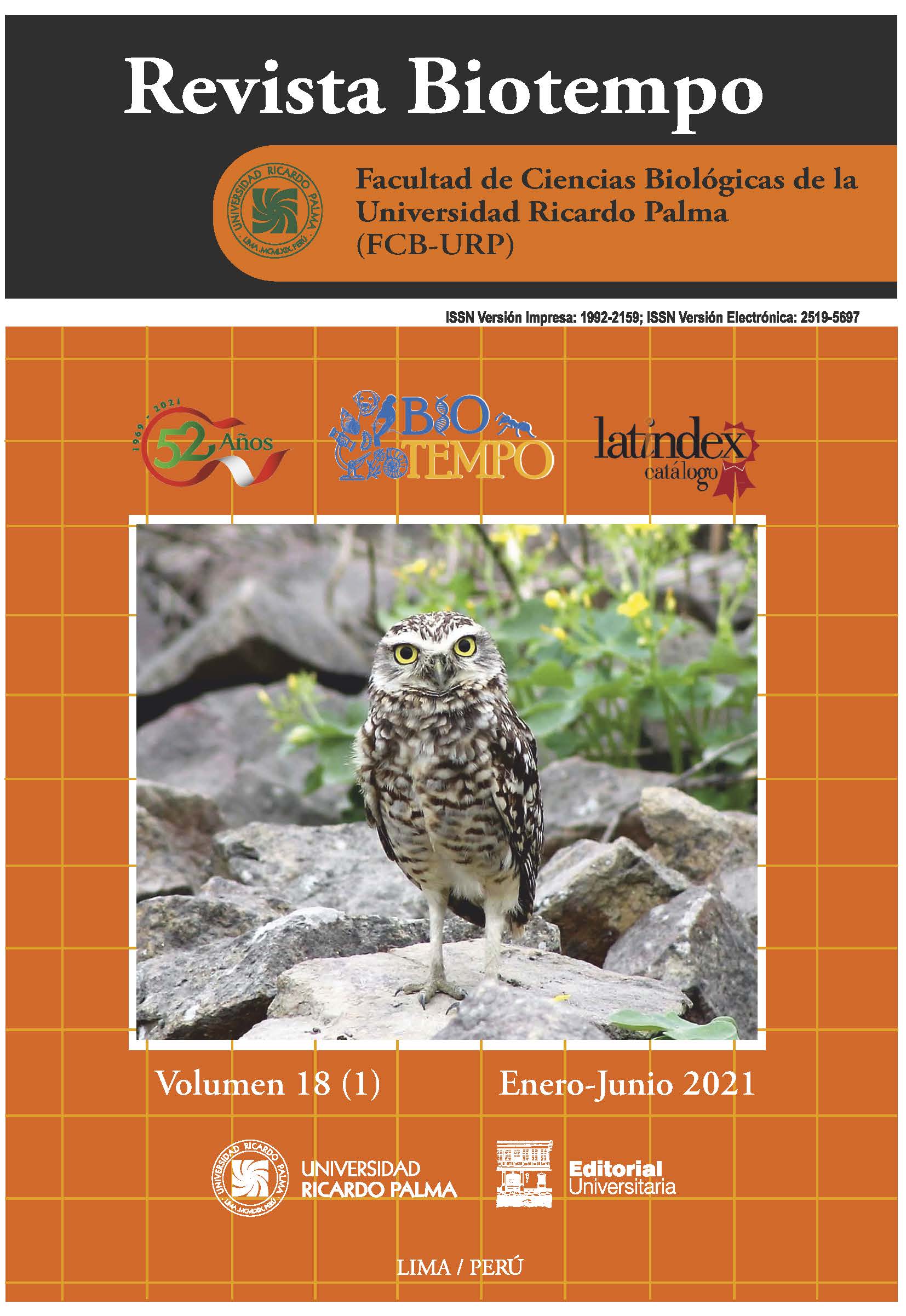INDIVIDUAL AND JOINTLY EFFECT OF HONEYCOMB TRAP, QUEEN REPLACEMENT AND GOOD MANAGEMENT PRACTICES ON VARROOSIS IN BEEHIVES OF APIS MELLIFERA LINNAEUS, 1758 (HYMENOPTERA: APIDAE) IN VILLA CLARA, CUBA
DOI:
https://doi.org/10.31381/biotempo.v18i1.3782Keywords:
Apis mellifera, queen replacement, exposed beehives, honeycomb trap, varroasis, Villa ClaraAbstract
The mite Varroa destructor Delfinado & Baker, 1974 is the most serious pest of honey bee colonies worldwide. This species has become a major plague for world beekeeping of European bees (Apis mellifera Linnaeus, 1758), although the impact from mite infestations varies greatly between continents. The objective of this study was to calculate the risk for varroosis after the application, individually and jointly, of three methods: honeycomb trap, queen replacement and best practices; as well as to assess the economic losses in the province of Villa Clara, Cuba. A total of 467 apiaries were investigated, three hives were sampled per apiary, for a sample size of 3,257 individuals. A retrospective descriptive epidemiological analysis of the behavior of the occurrence of varroosis was carried out. A chronological series of three years was analyzed and the seasonality, channels of habitual behavior and varroosis infestation rate were determined. A risk analysis was carried out, applying an observational analytical study of transversal type, to determine the possible association between the evaluated factors and the disease; an analysis of binomial proportion and Chi-square test was performed for the infestation rate between municipalities. The infestation rate was 3,1%. The enzootic channel of the Varroa infestation rate for the territory, in the period of study was from 2,2 to 4,6 and the trend it is to decrease. It is concluded that the use of these three methods, individually and jointly, constitutes a protection factor since it prevents varroosis significantly.










